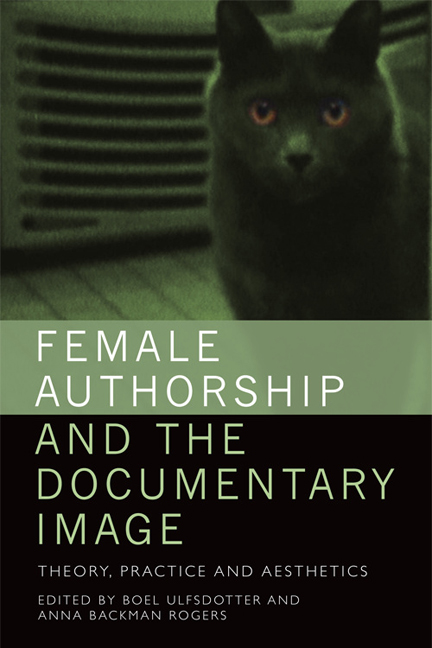Book contents
- Frontmatter
- Contents
- List of Illustrations
- Notes on the Contributors
- Foreword
- Introduction
- PART ONE DOCUMENTARY PRACTICES
- PART TWO DOCUMENTARY THEORIES
- PART THREE FEMALE AUTHORSHIP AND GLOBAL IDENTITIES
- ‘Being a Woman Documentary Maker in Taiwan’ – An interview with Singing Chen and Wuna Wu
- Select Bibliography
- Index
11 - Celebrity/Activist/Photographer: Mia Farrow
Published online by Cambridge University Press: 05 May 2021
- Frontmatter
- Contents
- List of Illustrations
- Notes on the Contributors
- Foreword
- Introduction
- PART ONE DOCUMENTARY PRACTICES
- PART TWO DOCUMENTARY THEORIES
- PART THREE FEMALE AUTHORSHIP AND GLOBAL IDENTITIES
- ‘Being a Woman Documentary Maker in Taiwan’ – An interview with Singing Chen and Wuna Wu
- Select Bibliography
- Index
Summary
INTRODUCTION
Mia Farrow is an acclaimed film actor who has appeared in over fifty-five films; she is a ‘Hollywood’ celebrity, with much of her personal life open to public perusal; she is a human rights activist, focusing on violence committed on women and children in war zones and sites of natural disaster in many countries; and she is a skilled photographer, communicating much of her activism work via video and an extensive photographic archive. Time magazine in 2008 named her as one of the most influential people in the world. This chapter examines her human rights-directed photographs of children, in the context of both her status as a celebrity activist and her broad oeuvre, and through the close study of some individual works.
Her role as a human rights activist provides this chapter with its main focus; I suggest, however, that a significant key to understanding her activist work and its social impact is to be found in aspects of her professional acting career as well as her personal ‘private’ life. It is useful here, then, to contextualise her activism work with her social identity in a wider context when it is relevant to examining her role as an author of the documentary image. Farrow's work with UNICEF places her as what is now known as a ‘celebrity activist’, alongside other well-known actors such as George Clooney, Matt Damon and Angelina Jolie.
I want, at this stage of discussion, to state that I am not introducing Farrow's private/public personal and professional life as a way into interpreting her documentary images per se, nor as the only way to interpret these images. Her works stand as texts that can be analysed and thought about in the context of several complex social environments. These include the broad contexts of world politics, geography and human rights activism as well as the interpretative frameworks associated with imaging genocide: the ethics of making images of traumatised people, especially those of children. Due to this chapter's focus on female documentary image-makers, not only on the images they create, I acknowledge the need to probe a little more into her personal and professional celebrity status than I would otherwise do when examining the work of a photographer.
- Type
- Chapter
- Information
- Female Authorship and the Documentary ImageTheory, Practice and Aesthetics, pp. 186 - 204Publisher: Edinburgh University PressPrint publication year: 2018



